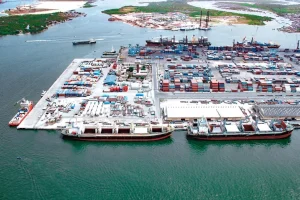The global automotive market has witnessed a significant influx of pre-owned vehicles from China, often noted for their competitive pricing. This economic phenomenon prompts an in-depth exploration of the underlying factors that enable such attractive price points. The affordability of these vehicles is not a random occurrence but the result of a complex interplay of domestic market dynamics, manufacturing efficiencies, and strategic economic policies. Understanding these elements provides crucial insight for international buyers and industry stakeholders looking to engage with this growing segment.
The expansion of chinese brand cars into international markets has been remarkable. Initially focused on new vehicle exports, the sector now includes a substantial flow of second-hand models. This shift is instrumental in understanding the pricing strategies behind these used cars. The domestic push for newer models creates a surplus of pre-owned vehicles, which are then channeled into the export market. This surplus is a primary driver of their low cost, making second hand cars for export a common sight in many ports worldwide.
Chinese Brand Cars have domestic market influence
Production Scale and Model Turnover
The immense production capacity of China’s automotive industry fundamentally shapes the used car market. Chinese manufacturers produce vehicles in vast quantities, leading to rapid model updates and replacements. This high turnover rate within the domestic market quickly depreciates the value of older models. Consequently, a large inventory of recent, yet pre-owned, vehicles becomes available for sale at relatively low prices. This constant refresh cycle ensures a steady and abundant supply of modern used cars, directly impacting their export valuation.
Regulatory and Tax Structures
Domestic policies in China play a pivotal role in shaping vehicle affordability. Favorable tax regulations and government incentives are often designed to encourage citizens to purchase new vehicles. These policies can inadvertently lower the resale value of used cars within the country. When these pre-owned vehicles are then sold internationally, their price point is inherently low, making them highly competitive in their destination markets. The cost advantage derived from these internal policies is a key factor that international sellers leverage.
Logistics and Supply Chain Efficiency
The process of exporting used cars from China is supported by a highly efficient and cost-effective logistics network. Major Chinese ports have specialized infrastructure for vehicle handling and shipping, which significantly reduces associated costs. This logistical advantage means that the expenses incurred from moving a car from a domestic auction to an international buyer are minimized. These savings are then passed down the chain, contributing to the final attractive price tag of the vehicle for the overseas consumer.
Market Positioning and Global Demand
Chinese exporters have strategically positioned their used vehicles to target specific international markets. There is growing demand for affordable and reliable transportation in developing regions, and cars from china fit this requirement perfectly. By focusing on these markets, exporters can operate on thin margins per unit but achieve profitability through high volume sales. This strategic focus on volume over high per-unit profit is a fundamental reason why these second-hand cars are so cheap upon arrival in their destination countries.
Initial Purchase Price and Depreciation
A primary reason for the low cost of used Chinese vehicles is their starting point: the initial purchase price. New chinese brand cars are often more affordable than their international counterparts due to lower production costs. This initial lower value translates into a proportionally lower resale value. Furthermore, these cars tend to experience steeper depreciation in their early years within the local market, resulting in a much lower price point when they are eventually sold as used and prepared for export.
Competition and Market Perception
The global perception of Chinese automobiles, rightly or wrongly, still influences their second-hand value. Despite significant improvements in quality and reliability, some international markets may perceive these vehicles as less desirable than established Japanese, Korean, or European brands. This perception, combined with fierce competition among a large number of chinese brand cars exporters, creates a buyer’s market. Sellers must keep prices low to remain competitive, further driving down the cost for the end consumer and benefiting markets that seek second hand cars for export.
Quality and Reliability Considerations
It is a common misconception that a low price equates to poor quality. The manufacturing quality of cars from china has seen dramatic improvements over the past decade. Many modern used vehicles available for export are mechanically sound and feature-rich. Their affordability is less a reflection of their condition and more a result of the economic and market factors previously discussed. International buyers can often find high-value deals—modern vehicles with low mileage and good maintenance records at a fraction of the cost of other comparable options.
Conclusion
The affordability of pre-owned Chinese vehicles is not attributable to a single cause but is the outcome of a strategic confluence of factors. The massive scale of domestic production, supportive government policies, efficient export logistics, and targeted market positioning all intertwine to create a perfect storm of value. For global buyers, this represents an opportunity to access affordable and increasingly reliable transportation. As the quality and reputation of chinese brand cars continue to rise internationally, the value proposition of these used vehicles is likely to become even more compelling, solidifying China’s significant role in the global second hand cars for export market.



